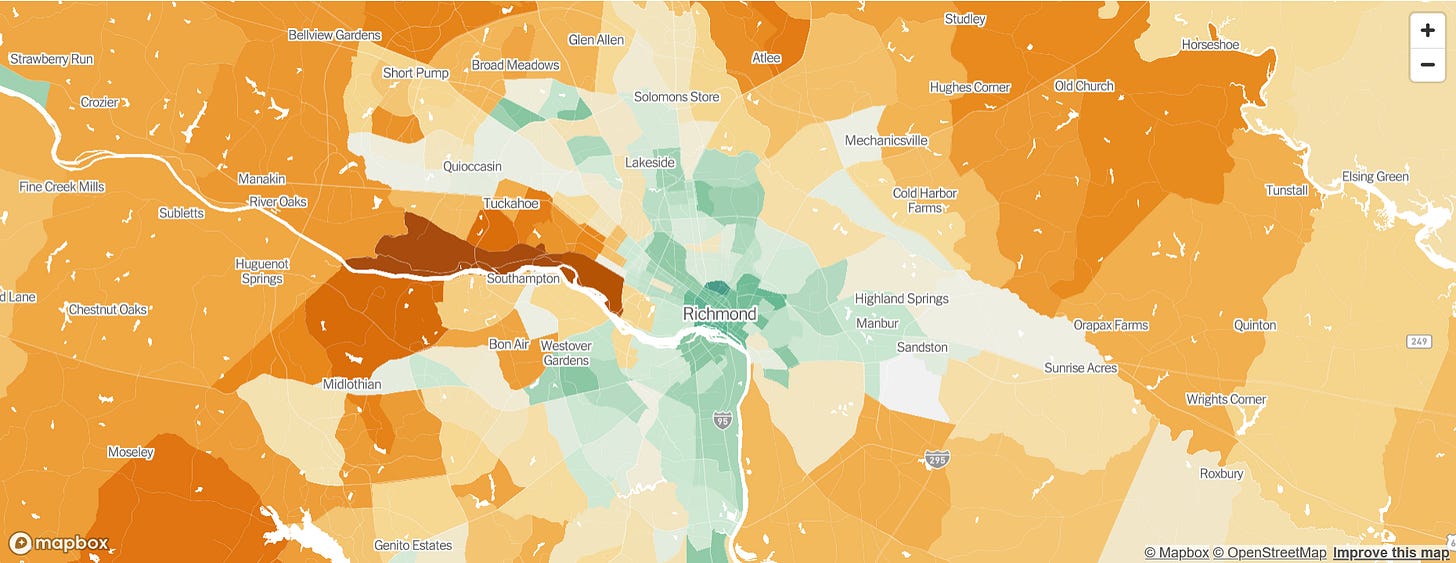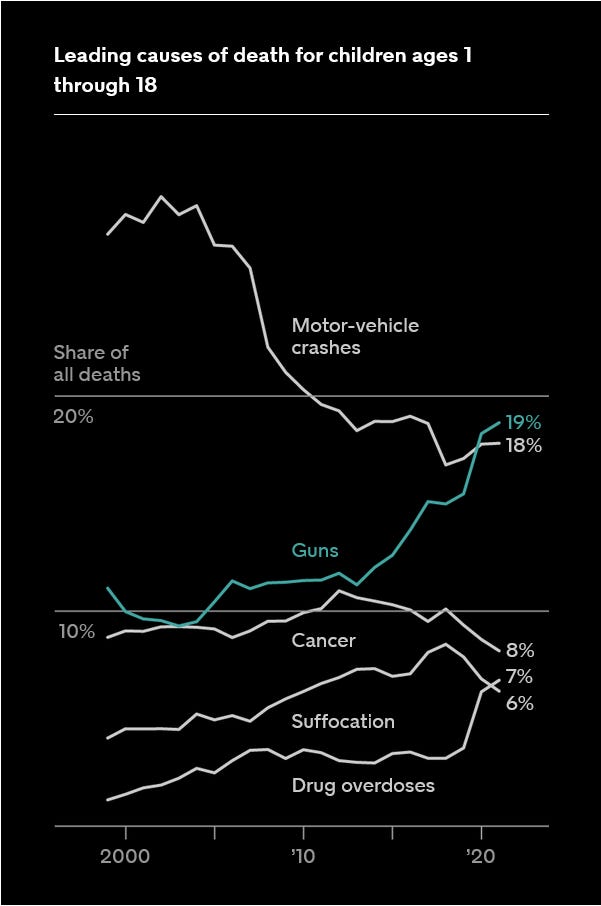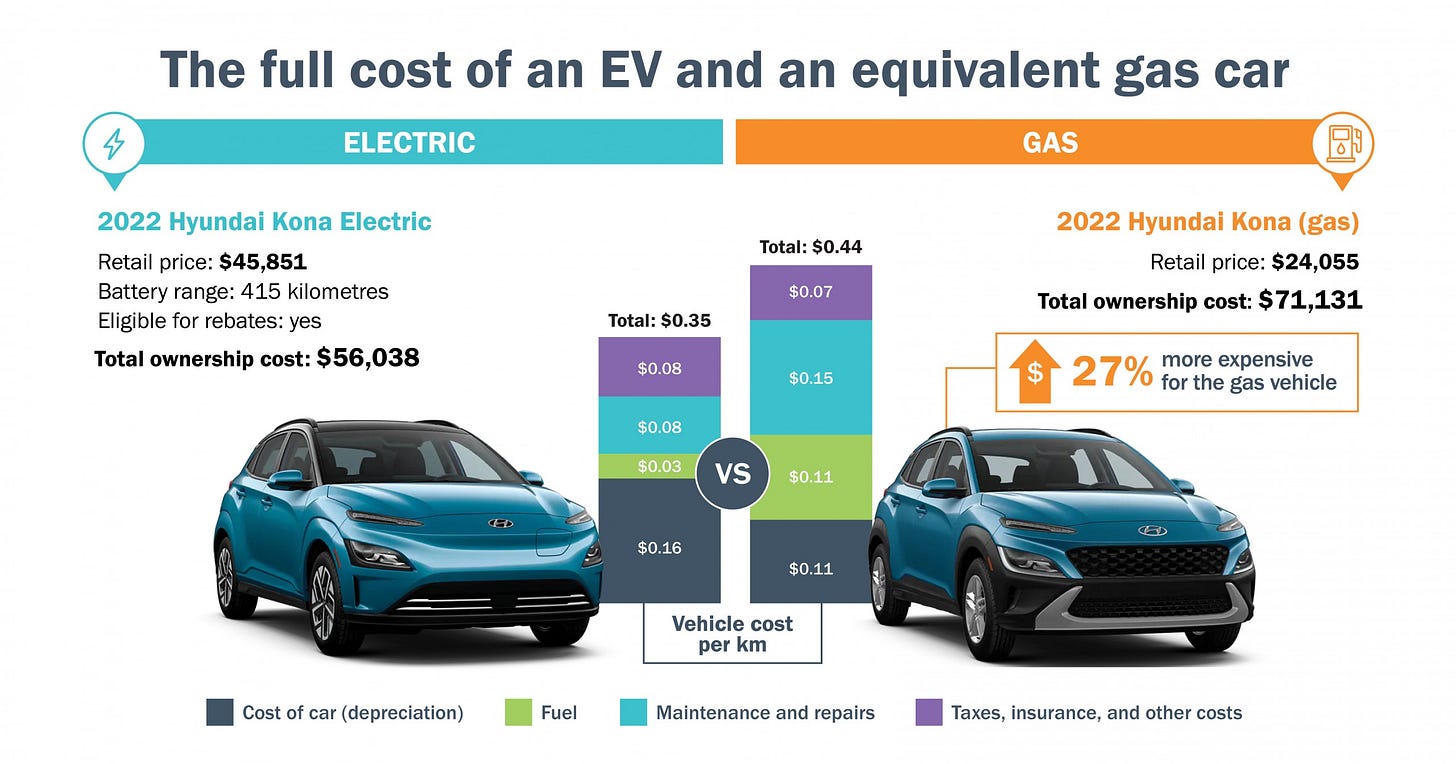Chartbook: Electric bikes as a climate change solution
A portfolio approach to transportation and building decarbonization
The views expressed in this blog are entirely my own and do not necessarily represent the views of the Department of Energy or the United States Government.
A new rule of thumb for when I decide to write something is when I end up ranting about something to multiple people repeatedly. To save myself (and others) a lot of breath and time, I’m finally writing about my journey to reaching the conclusion that electric bikes are the most equitable, most cost-effective, and most marginally additive emissions reduction technology.
The Story So Far
When I was a consultant at Actuate Innovation, I was tasked with designing DARPA-style programs that would unlock systemic change to to tackle climate change (all views here are my own though). The starting point for me was to understand what the conventional decarbonization pathways were, and where there were systemic blockers that were hindering progress or where there was untapped potential to accelerate emissions reduction along alternative pathways.
Here’s my rough John Doerr style summary of the current narrative of how to reach net zero GHG emissions by 2050:
decarbonize the power grid through a mix of solar, wind, energy storage, and nuclear
Electrify the majority of transportation and industry (chemicals, steel and iron, concrete, etc)
For transportation and industry where electrification is difficult, use alternative fuels (like methanol or ammonia for shipping) and/or apply carbon capture
Reform agricultural practices
Carbon remove the remaining hard-to-decarbonize emissions
The scale of the challenge is enormous: we not only have to decarbonize the entire existing power supply in the next 15 years, but we also have to build out new power supply for all the energy loads that are now electrified. In particular, most of the new electricity load resulting from electrification is actually from transportation.
You may also have heard about the critical mineral challenge associated with the net zero transition. That is also predominantly a challenge stemming from electrifying transportation: the majority of the increased critical mineral demand (lithium, cobalt, nickel) is for producing electrified vehicles (see left figure below). And a small portion of the critical minerals used for clean energy are actually needed because those vehicles are so energy-intensive, as already shown above.1 Indeed, in the US, hitting the Biden administration’s goals for 50% car sales to be EVs by 2035 would use 5x more lithium in a single year of EV sales than the entire US power grid would need to decarbonize by 2050.
What this means is:
If we are able to reduce the energy intensity of transportation, then we will reduce the amount of new transmission and clean energy we need to build out by ~10% from the graph above (scroll to the bottom for an annotated bibliography for more precise studies than my back-of-the-envelope).
If we are able to reduce the material intensity of transportation, then we will reduce the amount of new mines/refineries needed and reduce the supply-side stress from the punishing and demanding timeline for a net-zero transition by 2050.
These two facts make transportation a good place to examine closely if we want to accelerate the net-zero transition, particularly the consensus around electric cars as the primary solution vector.2
Climate Urbanism as the Crux
It turns out, that there are actually other modes of transportation besides the car. While EVs reduce emissions by a factor of 2-4x compared to gas powered cars over their lifetime (depending on how you calculate lifetime), you can actually achieve 10x emissions reductions through biking and public transit.
Building the kind of mid-level density that allows bikes and public transit to be viable modes of transportation not only significantly reduces transportation emissions, it also is accompanied by lower emissions for buildings as well.3 When you have buildings with smaller square footage per person than the enormous empty mansions that are single family homes, that are also usually adjoined to other units, you get further energy efficiency gains (about 1/3 less energy used, 1/3 less construction material required compared to single family houses).
When you look at medium American cities, even with their car-dominated design and infrastructure, the average total emissions of city residents is still half that of those who live in the suburbs.
In summary, electric bikes are a significantly faster tool for emissions reduction relative to gas powered cars and have significantly lower material and energy intensity. Not only that, they are a solution vector that any individual can relatively easily afford and advocate for (compared to public transit projects, which are just as important, but require much more engaged advocacy and significant amounts of capital). From a climate policy perspective, we need to be elevating and framing electric bikes as the preferred individual climate action solution for folks living in urban areas.
The Equity Angle
Electric bikes are not only the best tool for transportation decarbonization, they also address the inequities in our society around transportation in a way that EV’s don’t. If you had to guess, what do you think young people are most likely to die of in America?4 Turns out, its guns and cars.
And this is a uniquely American problem: traffic fatalities per capita in the US are 2-3x those of peer developed nations.
Electric cars are arguably even more dangerous than their gas-powered counterparts, due to their heavier weight (from batteries) and their rapid acceleration.
Finally, while electric cars have lower lifetime operating costs (due to less maintenance, increased efficiency, and lower fuel price), they do have higher upfront cost (i.e. lifetime cost is still variable depending on financing availability and interest rates) and are still essentially the price of a car. In other words, they do nothing for low-medium income people who have always had difficulty affording a car. For instance, the electric version of the 2022 Hyundai Kona is 27% cheaper than the gas-powered version over its lifetime, but with a significantly higher upfront cost (which will continue to decrease over time as battery tech scales). But $0.35/km for an electric car compares to $0.11/km for an electric bike5.
It would be a sad future if we reach our net-zero goals, but do nothing to alleviate economic inequality and continue to perpetuate vehicle violence in our country, that destroys the lives of so many.
Summary
Electric vehicles:
are the primary source of increased demand for critical minerals by a significant factor in the net-zero transition
are the primary source of additional electricity load in the net-zero transition, which stretches the amount of clean energy deployment needed to reach net-zero
continue to perpetuate car-driven deaths, which are a leading cause of death for young people in America
lead only to marginal economic gains for consumers, especially low-medium income people
in conclusion: are an important, if over-emphasized, part of the transportation decarbonization portfolio.
Electric Bikes:
are far more material efficient and energy efficient for moving people and goods around in mid-density areas
are joyful to ride and won’t kill someone on the road
are far more capital efficient and economically equitable in a clean energy transition
Switching a gas-powered car to an electric bike essentially reduces 30% of personal emissions immediately (or going from a 2 car to 1 car household)
In case anyone attempts to misrepresent my position, let me try to have the last word: electric vehicles are an important climate solution and we should certainly continue to fund their development and deployment. Indeed, we already do, with literally billions of dollars of tax credits and grants from the Bipartisan Infrastructure Law and Inflation Reduction Act flowing to make EVs affordable and accessible.6
But what I am pushing for is to recognize that EV’s are not a silver bullet for transportation decarbonization and that in light of the already demanding net-zero timelines we’re on, we need to diversify our fiunding portfolio of transportation decarb solutions. Unfortunately, both in the broad discourse and in the spending of money, EVs have a monopoly right now and that is what I am trying to push back against.
Annotated Bibliography
A study focused on mining and mineral demand, which can be reduced with aggressive vehicle limits (and Seaver Wang’s thoughtful pushback)
There’s a second-order effect here which is that lithium-ion batteries are used for both grid storage and electric vehicles (though thats changing). What that means is that every battery put in an electric car is one that could be used to accelerate the deployment of renewables. In other words, there is a supply competition between grid decarbonization, which forms the foundation for electrifying every other sector, and one particular form of transportation decarbonization
Some people might point to sodium ion batteries for EVs as a technological innovation that elides these issues with EVs. While they are important for reducing the need for critical materials, they will still place a strain on the power grid as the fundamental energetics have not changed (and lack many of the equity benefits that I discussed later).
You’ll notice that this argument for e-bikes is predicated on having sufficient urban density and infrastructure to make the <10mile trips feasible. The advocacy required to achieve that kind of urban design is another thing I’m working on, but its a conversation for another time.
I actually went myself into the CDC data and visualized it in a streamlit app. You can see the leading causes of death by age group.
A home-brewed calculation. Assumptions: $1600 for an electric bike, 10,000 mile lifetime, $0.20/kwh (roughly US national average), 24 Wh/mile.
An electric bike can't replace all trips, so the $/km is not entirely apple-to-apple comparison (you'd have to factor in the number of trips per year you'd take that you would have used a car for but otherwise had to rent/borrow).
Some big ticket items: $5B for EV charging (National EV Infrastructure program), $6B for battery minerals, up to $7500 tax credit per EV for individuals (with constraints on EV cost and earned income), and approximately $40B in loan authority for the Loan Program Office.











